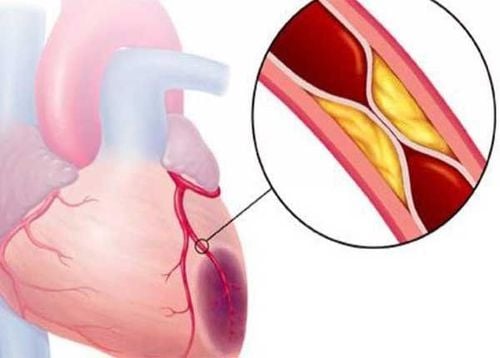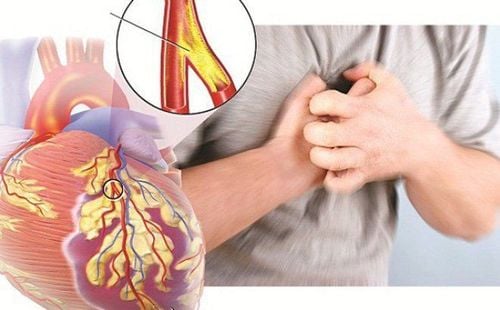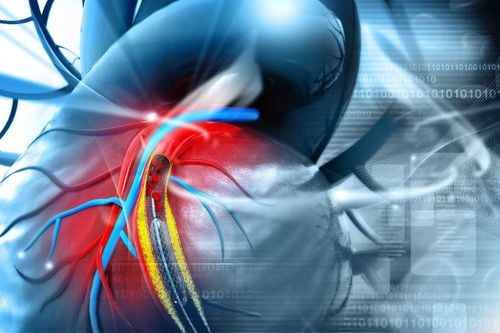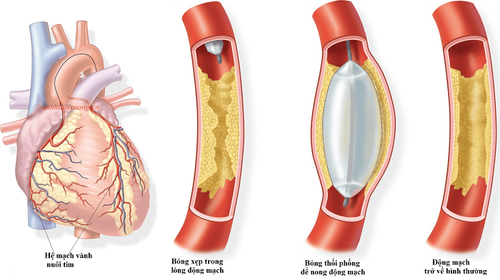This is an automatically translated article.
The article was written by MSc Vu Thi Tuyet Mai - Cardiologist, Cardiology Center - Vinmec Central Park International General Hospital.Coronary heart disease is often thought to be a male problem. However, coronary artery disease is the leading cause of death worldwide in both men and women. When the disease is severe, symptoms are usually 7-10 years higher in women than in men. Symptoms in women often do not have a typical heart attack, the pain is vague, often accompanied by sweating, shortness of breath, nausea, vomiting, not given enough attention, leading to untimely diagnosis and treatment. , the mortality rate is higher in women than in men.
1. What is coronary artery disease?
Coronary arteries are blood vessels that carry blood to the heart muscle. Coronary artery disease (also called ischemic heart disease or ischemic heart disease) is caused by thickening of the inner lining (endothelial) of the coronary arteries. This thickening is often due to atherosclerosis. Plaque is made up of fat that builds up inside the walls of arteries, slowing or blocking blood flow. If the heart muscle does not receive enough blood to function, we will have a heart attack, a myocardial infarction.
2. What are the symptoms of a heart attack in women?
Heart attack symptoms are most common in women as they are in men - feeling like your heart is being squeezed, constricted, pressed, or sometimes a dull ache in your chest. The most common location of pain is behind the breastbone, mid-chest or heart area, can appear locally or spread to the neck, jaw, shoulder, left arm. The pain usually lasts only a few minutes and can come and go.

Vị trí xuất hiện cơn đau tim thường ở vùng giữa ngực
But chest pain is not always typical, especially in women, symptoms can be vague, often described as pressure or tightness in the chest area. And it is possible to have a heart attack without symptoms of chest pain, which is more common than in men, such as:
Pain in the neck, jaw, shoulder, upper back or abdomen discomfort Difficulty breathing Pain in one or both arms Nausea or vomiting Sweating Dizziness Unusual fatigue Indigestion These symptoms can be vague and go unnoticed, possibly because women tend to have blockages not only in the arteries but also in the small blood vessels - a condition called coronary microvascular disease.
Symptoms in women appear more often at rest, or even during sleep, than in men. Stress, anxiety, also plays a role in the onset of heart attacks in women.
Due to atypical symptoms, women are often not properly diagnosed or diagnosed late, heart damage has occurred.
If we think we may be having a heart attack, we should go to the hospital immediately and do not drive ourselves to the emergency room unless there is no other option.

Những triệu chứng bệnh lý tim mạch khiến chị em phụ nữ mệt mỏi
3. What are the risk factors for coronary heart disease in women?
The risk of coronary heart disease is divided into 2 groups: non-modifiable risk factors such as age, gender, and genetics, and modifiable risk factors such as smoking, hypertension, diabetes mellitus, etc. Hypercholesterolemia, obesity, autoimmune diseases.
Smoking in women increases the risk of coronary heart disease by 5 times compared to non-smokers. And if you combine smoking and taking oral contraceptives, your risk of coronary heart disease can increase up to 13 times the average person. In addition, smoking also leads to menopause about 2 years earlier, reducing the amount of estrogen in women, which helps to dilate coronary arteries, so smoking in women increases the risk of heart disease. coronary artery disease is higher than in men, especially in women over 50 years of age. In addition, studies have also shown that in postmenopausal women, the prevalence of hypertension, especially systolic blood pressure, as well as elevated LDL cholesterol is higher than in men, where hypertension and elevated LDL-cholesterol are demonstrated. are two important risk factors for coronary heart disease.
Besides, the incidence of autoimmune diseases such as lupus erythematosus, rheumatoid arthritis in women is also higher than in men, these diseases cause chronic inflammatory reactions, causing the development of fibrous plaques. arteriosclerosis.
In addition, stress, anxiety, depression, sedentary habits also increase the risk higher in women than in men.

Phụ nữ hút thuốc lá thường có nguy cơ cao mắc bệnh mạch vành hơn người khác
4. Is heart disease something only older women should worry about?
No. Women of all ages should take heart disease seriously. Women under the age of 65 - especially those with a family history of heart disease - also need to pay close attention to heart disease risk factors.
5. What can women do to reduce their risk of heart disease?
Living a healthy lifestyle can help reduce your risk of heart disease:
Quit smoking or avoid exposure to secondhand smoke Get regular exercise: at least 150 minutes per week of moderate aerobic activity, 75 minutes of vigorous aerobic activity each week, or a combination of both. Maintain a healthy weight. Eat a healthy diet, rich in fruits and vegetables, low-fat or fat-free dairy products, and lean meats. Avoid saturated or trans fats, sugar, and high amounts of salt. Avoid stress and anxiety Limit alcohol. If you have more than one drink per day, cut back. One glass is about 360ml of beer, 150ml of wine or 45ml of distilled spirits, like vodka or whiskey. Good control of blood pressure, blood cholesterol, and blood sugar.

Một chế độ ăn uống khoa học có thể giúp bạn giảm nguy cơ mắc bệnh tim
6. Are heart disease treatments different in women than in men?
Overall, treatment for coronary heart disease in women and men is similar. These include medication, angioplasty and stenting, or coronary artery bypass graft surgery.
Studies show that women are less likely to be prescribed statin treatment to prevent future heart attacks than men.
Angioplasty and stenting, equally effective in both men and women. But for coronary artery bypass surgery, women are more likely to have complications than men.
Customers can recognize the risk of coronary heart disease early when performing the Coronary Checkup Package at Vinmec hospital. With a team of leading medical doctors, comprehensive and professional medical examination, consulting and treatment services, the Coronary Cardiovascular Examination Package has helped screen and detect many cases of coronary heart disease early.
Customers can directly go to Vinmec Health system nationwide to visit or contact the hotline here for support.














